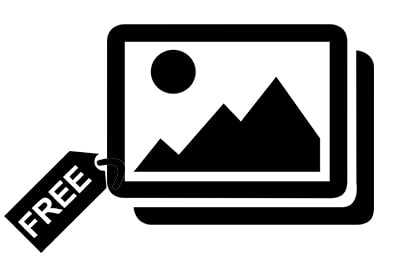What is meant by image selling?
Image selling is the process of selling stock images or photographs online. This could include selling images to businesses, websites, magazines, or other types of publishers. People can also sell their own images for a fee, or offer them for free under a Creative Commons license. This is an increasingly popular way to make money online, and there are many stock image websites where photographers can list their images for sale.
Commercial usage of the images necessitates the acquisition of releases from the participants and the property owners. Additionally, they must be sold under licenses that permit commercial usage, which typically translates to higher profits for the photographer.
More about images selling
Image selling is selling digital images, such as photographs, illustrations, and other artwork, to customers over the Internet. It is a form of e-commerce. Images can be sold on stock photography websites, digital art galleries, or even directly from the photographer or artist’s own website.
There are two primary models for selling images online. The first is the royalty-free model, which allows customers to purchase a single image for a one-time fee, with the right to use the image for unlimited commercial and non-commercial uses. The second is the rights-managed model, which allows customers to purchase a single image for a one-time fee, with the rights to use the image for a specific purpose.
Image selling has become increasingly popular in recent years, as it allows photographers and artists to reach a larger audience and make more money from their work. It is also a great way for customers to find high-quality images for a fraction of the cost of hiring a professional photographer.
Online photo sales: Two critical steps
- Identify your market
Every good photographer has a recurring aesthetic or guiding principle in their work. Consistency is important, regardless of your passion—travel, fashion, cityscapes, environment, food, etc.
To see more of whatever first piqued their attention, individuals follow other people online. In the event that such expectations aren’t realized, they unfollow other users.
Finding your specialty is normally something you feel your own into as you observe which aesthetics and images are popular with your audience if you want to sell pictures online. However, you can also analyze the number of searches for phrases associated with your images to determine the demand for particular themes.
Like bloggers, YouTubers, as well as other artists of any type, photographers should invest in growing their audiences since, in the end, that’s what enables them to expand their businesses and sell pictures online.
Whether you’re a freelancer or selling prints of your photography online, you’ll need to develop and use your network to increase your credibility and reach.
You may reach a large audience by using visual social media networks with built-in audiences, such as Instagram and Tumblr. However, there are other photo-sharing websites that may introduce you to other photographers and allow you to gain recognition or, depending on the platform, sell rights to use your images.
- Add online shopping to your portfolio.
Most photographers have such a major website where they may display their work and accept commissions from clients. But by incorporating eCommerce into it, including the capability to collect payments, you may create a number of other revenue streams by offering services, tangible things, and courses.
Anjan Lal, for instance, sells wall art while showcasing his love for wildlife photography in his business.
To add further functionality, like the free Digital Downloads app and the Instagram gallery, you might also want to think about downloading Shopify applications. You could also use Linkpop to make a shoppable link that connects your online marketplace to your social media networks for further ease.
Sites to buy and sell photographs
One of the most common methods to “sell” your images online to businesses, publications, and anybody else who might be interested in utilizing them for their own reasons is licensing.
This is crucial, after all. Work backward and consider how a company or publisher may utilize your photographs; adaptable images that convey concepts are frequently preferred, especially when they include people.
- Stock Adobe
One of the finest sites to sell images online is Adobe Stock since, when you offer photos for sale there, they are also made accessible on Fotolia, a stock photography website. On the images you sell via Adobe Stock, you will receive a 33% commission.
- Canvas
Canvas provides a fantastic chance for contributors to earn internationally by uploading or selling their photographs, videos, and designs without even any listing fees. Over 65 million active users from 179 countries utilize Canva’s creation tools. You may build your portfolio this way and be paid every time someone uses your work.
- Restock
Based on the overall number of downloads, Restock pays authors commission rates ranging from 20 to 40%. They also offer a number of affiliate programs that you may use to get money.
- Depositphotos
The resolution & license type, as well as the contributor’s expertise and standing on the platform, all go towards Depositphotos’ commission structures. The commission rates range from 34 to 42%.
- Dreamstime
A stock photo website called Dreamstime offers contributors a substantial payment. They do, however, demand a greater level of dedication: you must spend at least six months with at least 70% of your collection on their website. However, non-exclusive contributors make up 25–50%, and exclusive images bring in 27.5–55%. Both on the donor and buyer sides, there are several methods to get paid for referrals.
- Getty Pictures
Getty Photographs, a premium stock photography website, draws companies and publications searching for high-quality or difficult-to-find unique images to license. As expected, there are stricter requirements to become a contributor than on many other stock picture websites. Rates for images licensed through GettyImages.com begin at 20%.
- Picture Vortex
You may also sell your images on other websites as Image Vortex does not need exclusivity. 70% is the commission rate, and you choose the prices.
- iStock
The micro-stock division of Getty Images is called iStock. Depending if the photographs are exclusive or not, the commission varies from 25% to 45%.
- Fotolia
Users of Fotolia, which Adobe Stock just bought, have a choice between the Pay-As-You-Go and Subscription pricing options. Pay-As-You-Go clients who purchase photos receive a commission of 20–63%, while Subscription customers get a commission of 33% with a minimum guarantee.
- Freepik
Over 32 million individuals every month visit the Freepik website and its affiliate site, Flaticon. It’s an excellent platform to profit on with over 100 million downloads each month. Using the pay-per-download model, you receive payment based on how many people download your work. Freepik pays a percentage of your content download revenue that is close to 50%.
Shutterstock is a segment and sub-website where photographs are less expensive and non-exclusive, and the key to boosting downloads is to provide a lot of visual metaphor-friendly images. Although you shouldn’t anticipate making as much money here, it’s a fantastic location to start off. Additionally, an affiliate program exists. Additionally, you may make more money by referring new clients or photographers.
- Snapwire
Building your portfolio or winning contests are two ways Snapwire may help you make money when you sell images using its smartphone app. You may create a portfolio & sell your photos to consumers or clients directly online. When someone purchases one of your photographs, your account is immediately credited.
- Shutterstock
The key to increasing downloads on Shutterstock, a section and sub-website where photos are less expensive & non-exclusive, is to offer a large number of images that are conducive to visual metaphors. It’s a great place to start, even if you shouldn’t anticipate generating as much money here. A program for affiliates also exists. Additionally, recommending new customers or photographers might increase your earnings.
- Snapwire
Snapwire may assist you in earning money when you sell photographs using its mobile app in two different ways: by helping you build your portfolio or by winning competitions. You may set up an internet portfolio and sell your images to customers or clients there. When someone buys one of your pictures, your account is reimbursed right away.
- Unsplash
Unsplash allows you to interact with people in the community and connect with those who are interested in utilizing your portfolio, but it does not pay directly you for submitting your clicks.
Make sure the messaging option is turned on so that potential contacts may email you directly from your profile. Your UPI ID can also be integrated or included in the website area of your profile.
- Vecteezy
You are able to upload photographs to Vecteezy using their Free program’s free license, which pays for every download. You may make extra money by submitting materials under your Pro license.
A glossary of terminology used legally when selling photos online
- Editing usage
Permission to use on websites, publications, newspapers, and other media.
- Use for profit:
Permission to use for promotional purposes in advertising and marketing of a good or service.
- Use in stores:
authorization to use in the production of a tangible good for sale. This includes photo prints, posters, and merchandise (pillows, mugs, etc.). Though it should be taken into consideration independently, commercial use is occasionally discussed in the same sense.
- Exclusive:
Exclusive usage means that the photo may only be used by the person who acquires the license from you.
- Non-exclusive:
Anyone may buy and use non-exclusive photo licenses, and they often cost just under-exclusive ones.
- Public sphere:
has no limitations or claims to copyright and is free to be used for editorial, personal, and business reasons.
- Creativity Commons
Other people are free to use your work as long as they adhere to the set limitations. Sometimes the inventor must be given credit for their work. To make a badge for this license without cost, go to Creative Commons.
- Royalty-free:
Others who purchase a license may use the image as many times and for as long as they choose. Since these photographs are often non-exclusive, it is the most popular and least expensive sort of license to buy.
- Rights-managed:
To use the image once only with limitations on dissemination, get a license. For other uses, more licenses must be acquired.
- Privilege of publicity
When it came to their presence in your photography, the people in your images have specific rights, particularly when it comes to business use it when your sell photos on the internet. This is a different issue from the copyright issues mentioned above, therefore to be safe, you should first get the subject’s express consent.
Conclusion
In conclusion, the sale of images can be a profitable venture. However, it is important to ensure that all legal and copyright considerations are taken into account before selling images. It is important to consider the potential customer base and the potential market for the images. Additionally, it is important to ensure that all images are of high quality and that they are properly priced. Finally, it is important to consider the terms and conditions of the sale, including payment and delivery terms. With these considerations in mind, image selling can be a lucrative business.
You can sell your images by setting up an account with a stock photography website, such as Shutterstock or Adobe Stock, and uploading your images to their library. You can also sell your images directly to customers through your own website or other online marketplaces. Additionally, depending on the type of images you have, you may be able to license them out to businesses or media outlets for use in their projects.
You can sell any type of image including digital photos, illustrations, vectors, and stock photos.
The prices for your images will depend on the size, quality, and usage rights you offer. Generally, you can charge more for higher quality images, images with more usage rights, and larger sizes.
Most image-selling websites and services use a payment system such as PayPal for payments. You may also be able to receive payments through direct bank transfer or other payment methods.
Most image-selling websites and services offer various licensing options such as royalty-free or rights managed. You can set the licensing terms for your images and buyers can choose the option that suits their needs.
Most image-selling websites and services provide some form of legal protection to ensure that buyers do not violate your copyright. Additionally, most websites and services also provide terms of service which outline the rights and responsibilities of both the seller and the buyer.






